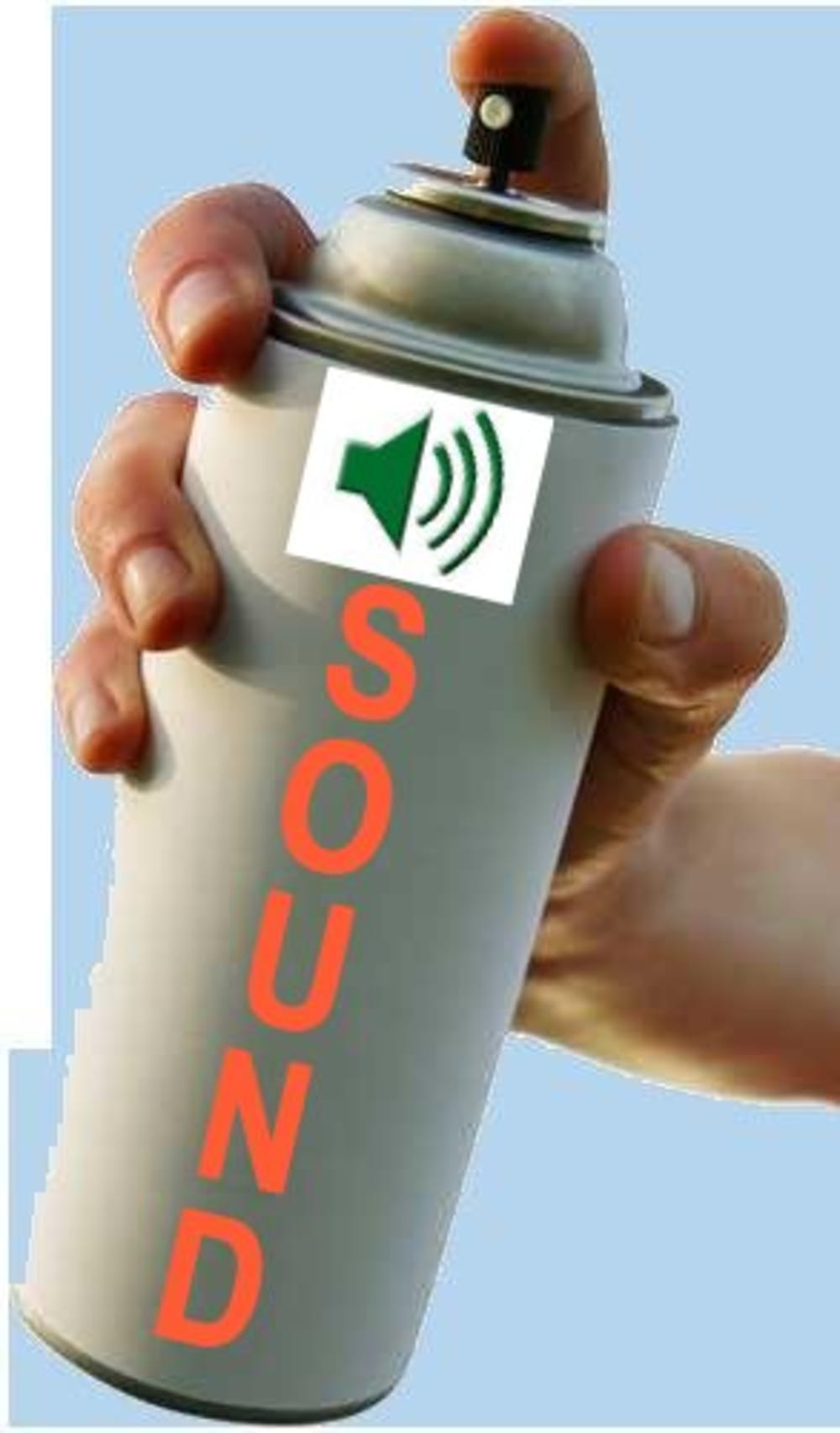“Sound in a Can” is in keeping with Einstein’s “If at first the idea is not absurd there is no hope for it.”
The basic idea was conceived a few years ago after an excruciating evening in a deafeningly loud night club.
It is a relatively simple concept to understand, a room freshener sends perfumed particles which adhere to air particles and enhance our smell, similarly magnetized ions or particles in a can are sprayed into the air (on a dance floor surrounded by an air curtain for example) which adhere to air molecules making them behave differently. The air molecules agitate with each other magnifying sound such that a low level source is amplified several times in the area it is sprayed.
Similarly sound can be deadened so that you can listen to that new album at the volume it sounds best by using the amplifying spray in the room and concurrently using the sound canceling spray outside your door to prevent sound from escaping. Multiple uses: hospitals, auditoriums, libraries, parties, baby's rooms, defense (stealth) etc.
The concept can be described further:
•Sound travels through air but not in a vacuum. By changing the air quality, we notice marginal differences in the quality of sound
•By charging the air with particles which act differently when agitated, we can potentially affect amplification or diminution of sound waves as it travels through the charged air – enhancing or diminishing what we hear.
•If we spray a room for example – we would be inside a large microphone where everything spoken or any sound made in that room is amplified as well. Take the night club example; imagine an air curtain around the dance floor with music playing at a much lower volume and amplification spray used within the air curtain enclosing the dance floor. It would translate to a loud dance floor for the people inside and a lounge like atmosphere for those outside the floor.
•Similarly we could spray particles which dampen or deaden sound by slowing down or reducing the sound travel characteristics of the air making the contained area or room silent.
•A teenager could spray the amplifying spray in his/her room and then spray the silencing spray outside the doors so he or she could listen to loud music without disturbing anyone outside.
•An alternative could be to have the sound source in an ultrasonic frequency and the sprayed particles acting as converters, converting them into an audible frequency. This could work better for a nightclub so that each person’s voice is not amplified as well.
In today’s world, perception is reality and this challenge can be achieved with the right resources and attitude.
Like this entry?
-
About the Entrant
- Name:Vikram Aditya Swaminadhan
- Type of entry:individual
- Patent status:none

